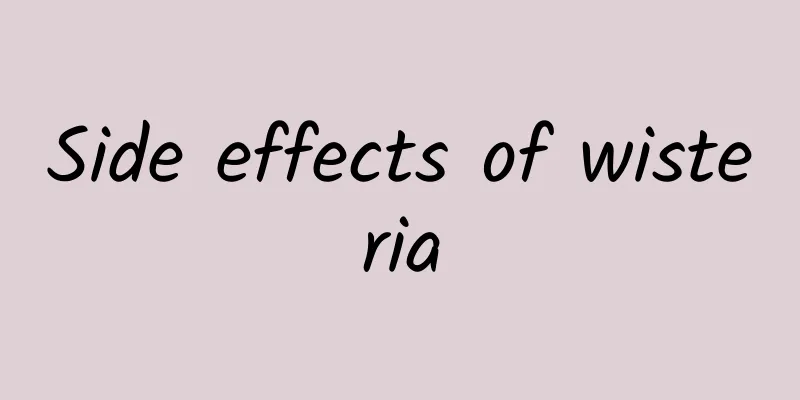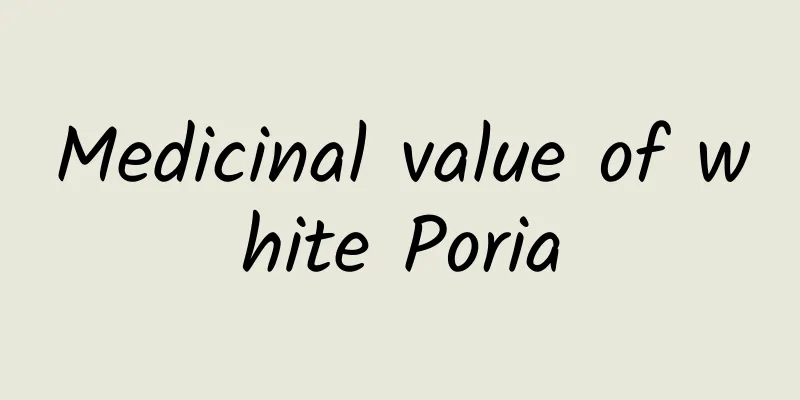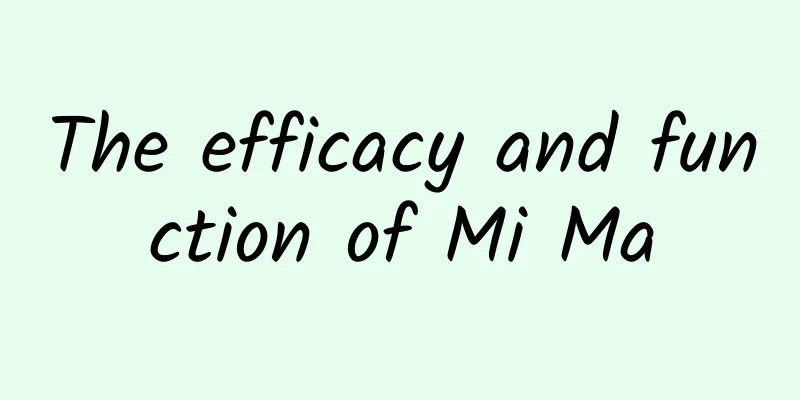Side effects of wisteria

|
Maybe everyone has heard the story of wisteria. Its birth is closely related to a romantic love story and it is a symbol of love. However, for a romantic flower like wisteria, it is also a plant that is often eaten by some families because it contains nutrients necessary for our body's development, but it also has some side effects. I hope everyone can pay attention when eating wisteria flowers. In order to let everyone better understand the side effects and nutritional value of wisteria flowers, this article introduces us to its relevant information. I hope everyone can put down their work and take a good look at the content introduced in this article, which will be of some help to your consumption of wisteria flowers. Wisteria is also known as wisteria. Fabaceae, Wisteria genus. It is intertwined and coiled, climbing railings and trellises. In early summer, purple spikes hang down and the flowers are numerous and fragrant. In midsummer, the trellises are filled with thick leaves and pods. Wisteria, a famous flowering and shade vine native to China, has spawned a large number of related cultures while being planted and appreciated, and has become the subject of many works of art. Serving wisteria flowers as a side dish for drinking was in line with the dining customs of the time. In vegetarian banquets, wisteria flowers are as delicious as the eight vegetarian delicacies - the custom of eating wisteria flowers has been passed down to this day. In folk culture, the purple flowers are either blanched in water and served cold, or wrapped in flour and fried to make flavored pasta such as "Purple Wisteria Cake" and "Purple Wisteria Cake". Side effects: No side effects, you can eat it with confidence, but you must control the amount and just take it in moderation. Suitable for everyone: Wisteria flowers can be eaten by most people. The efficacy and function of Wisteria flowers in treating ascites swelling Wisteria flowers contain more volatile oils, as well as allantoin, allantoic acid, heptacosane and dihydrostigmasterol. They have the effects of detoxification, antidiarrhea and swelling. Take an appropriate amount of wisteria flowers, add water to boil the juice, remove the residue and add sugar to make a paste. Take one spoon each time, drink with boiled water, twice a day, to treat ascites. I believe that after reading this article, everyone should know how to distinguish the side effects of wisteria in life. We hope that when everyone uses the nutritional value of wisteria flowers, they can pay attention to its side effects. Don’t think that eating more wisteria flowers has no effect on our body. On the contrary, it can enhance our body’s resistance. |
<<: Medicinal Value of Artichoke
>>: Medicinal value of baking powder
Recommend
One Chinese medicine to open up the gallbladder meridian
Gentian is a Chinese medicine that can open up th...
From fish to humans, humans actually evolved from fish?
Recently, the Chinese Academy of Sciences held a ...
Will the moon fall? What is the probability? What would happen if it really falls?
Will the moon fall? If someone asks this question...
The efficacy and function of rosemary
Medicine is very common in life. Different medici...
Does musk really cause miscarriage or infertility? The truth made the queen cry in the toilet...
...
The efficacy and function of flying centipede
Chinese medicinal materials are very effective in...
The efficacy and function of Fusong Aconitum
Traditional Chinese medicine culture is profound ...
What are the medicinal values of wasps?
Wasps are a kind of insect. Many people avoid was...
Instead of gushing out lava, they spit out mud. How much do you know about Xinjiang's mud volcanoes?
Your browser does not support the video tag The l...
What medicinal herbs are best to make wine with five-fingered ginseng?
The five-fingered ginseng is also known as the &q...
The efficacy and function of loofah flowers
Recently, major TV channels have launched various...
What are the functions of vitamin B complex
The human body needs many nutrients, and it also ...
What are the Chinese medicinal herbs that are better for lactation?
After giving birth to a baby, a mother will face ...
The efficacy and function of brown slime fungus
Brown slime gills has a long history, and until n...
The efficacy and function of silkworm cocoons
Silkworm cocoon is a very common type of traditio...









